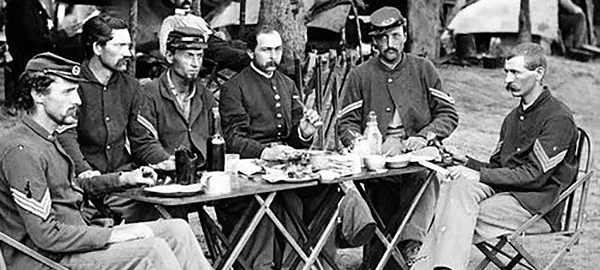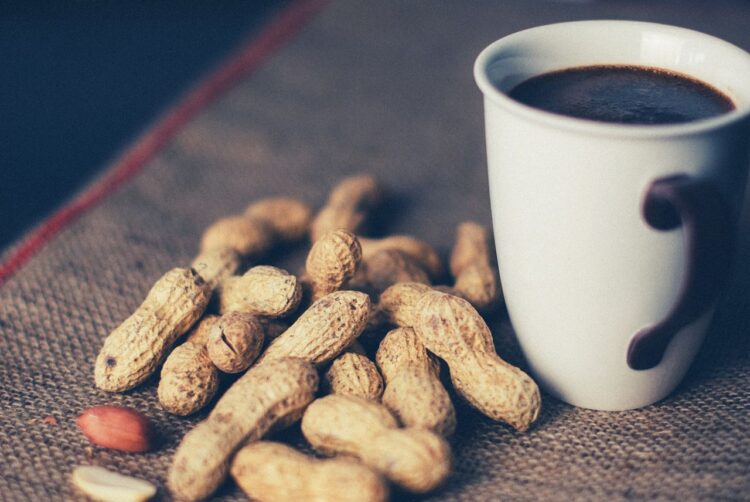Coffee Substitutes During the Civil War
In the midst of the American Civil War, when resources were scarce and coffee beans were not readily available, soldiers on both sides of the conflict turned to ingenuity and resourcefulness to satisfy their craving for a hot cup of brew. As coffee became increasingly scarce, creative alternatives such as acorns, chicory, and ground peanuts were used to mimic the taste and aroma of coffee.
To prepare acorns for use, soldiers would gather them, remove their shells, and roast them until they turned dark brown. The roasted acorns were then ground and brewed in a manner similar to coffee. Although the flavor was distinct from traditional coffee, it provided a semblance of comfort and familiarity. If you’re looking to explore a unique coffee alternative, acorn coffee might just pique your interest. Acorns, abundant in many parts of the world, can be transformed into a rich and flavorful beverage that closely mimics the aroma and taste of traditional coffee.

ACORNS
- Start by gathering ripe acorns from oak trees. Look for acorns with intact shells, free from signs of damage or decay. It’s essential to use acorns from edible oak species, such as white oak or red oak, as some species produce acorns that are bitter and inedible. Once gathered, remove the shells by cracking them open carefully. Discard any acorns that appear spoiled or have mold.
- Acorns naturally contain tannins, which can impart a bitter taste. To remove these tannins, acorns need to undergo a leaching process. There are a few methods you can use:
- Water Soaking Method: Place the cracked acorns in a container filled with water and let them soak for 12 to 48 hours. Change the water every few hours until it remains clear, indicating that the tannins have been leached out.
- Cold Water Method: Alternatively, you can place the cracked acorns in a mesh bag and submerge them in a running stream or river for a few days. The flowing water helps to leach out the tannins naturally.
- Boiling Method: Another option is to boil the cracked acorns in a large pot of water for about 15 minutes. Discard the water and repeat the boiling process several times until the acorns no longer release a bitter taste.
- After leaching, spread the acorns on a baking sheet or a flat surface and let them dry completely. Once dry, roast the acorns in the oven at a low temperature (around 250°F or 120°C) for 30 to 45 minutes. Roasting imparts a nutty flavor and enhances the aroma of the acorns. Keep a close eye on them to avoid burning.
- Once the roasted acorns have cooled, grind them into a fine powder using a coffee grinder or a mortar and pestle. The resulting powder resembles coffee grounds. To brew acorn coffee, you can use a method similar to traditional coffee brewing:
- Boil water in a pot or kettle.
- Add a desired amount of the ground acorns to a coffee filter or a muslin cloth.
- Pour the boiling water over the acorns and let it steep for 5 to 10 minutes, depending on your preference for strength.
- Remove the filter or cloth containing the acorns, and your acorn coffee is ready to be enjoyed.
- To further enhance the flavor of your acorn coffee, you can experiment with additions such as cinnamon, nutmeg, or a dash of vanilla extract. These spices can complement the earthy notes of the acorns and add a touch of warmth and complexity to your brew.

CHICORY
Chicory, a perennial herb with a bitter taste, became another widely adopted coffee substitute during the Civil War. Soldiers would harvest chicory roots, dry and roast them, and then grind them into a powder. Often mixed with other ingredients such as roasted grains, the powdered chicory would be brewed similarly to coffee. It provided a dark, robust beverage with a slightly earthy and bitter flavor that could closely resemble coffee.

If you’re looking to diversify your coffee experience or seeking a caffeine-free alternative, chicory coffee might be just what you’re looking for. Chicory, a plant with vibrant blue flowers and a bitter root, has been used as a coffee substitute or complement for centuries. It offers a unique flavor profile that can be enjoyed on its own or blended with traditional coffee. Let’s delve into the process of making chicory coffee and discover this delightful beverage.
- Chicory roots are typically roasted and ground to make coffee. Look for whole chicory roots or pre-ground chicory at specialty stores or online. If using whole roots, coarsely grind them using a coffee grinder or mortar and pestle. The grinding process releases the flavors and aromas locked within the roots.
- Chicory coffee is often enjoyed as a blend with regular coffee to add depth and complexity to the flavor. You can experiment with different ratios to find your preferred balance. A common starting point is a 1:1 ratio of coffee to chicory. Adjust the proportions according to your taste preferences, whether you prefer a stronger coffee or a more pronounced chicory flavor.
- Chicory coffee can be brewed using various methods, depending on your preference. Here are a few popular options:
- French Press: Add the desired amount of chicory (and coffee, if blending) to your French press. Pour hot water over the mixture, stir gently, and let it steep for about four minutes. Press down the plunger slowly, separating the brewed coffee from the grounds.
- Pour-Over: Place a coffee filter in your pour-over dripper and add the appropriate amount of chicory (and coffee, if blending) into the filter. Pour hot water over the grounds in a slow, circular motion, allowing the coffee to drip into your mug below.
- Espresso Machine: If you have an espresso machine, you can prepare chicory coffee using the same method as you would with regular coffee. Simply replace the coffee portion with chicory (and adjust the grind size if necessary) and pull a shot of chicory coffee.
- Sweetening and Serving: Chicory coffee has a naturally bitter profile, which can be balanced with sweeteners or milk. Add sugar, honey, or your preferred sweetener to taste, and consider adding a splash of milk or cream if desired. Experiment with different combinations to find the perfect balance that suits your palate.
PEANUTS
Peanuts, readily available in certain regions, were also utilized as a coffee alternative. Soldiers would roast peanuts, grind them into a coarse powder, and brew them as they would with coffee. While the resulting beverage lacked the traditional coffee flavor, it offered a rich and nutty taste that provided a sense of warmth and familiarity.

- Choose high-quality raw peanuts for optimal flavor. Roasting the peanuts is a crucial step in the process, as it enhances their nutty characteristics and adds complexity to the brew. You can roast the peanuts in two ways:
- Oven Roasting: Preheat your oven to around 350°F (175°C). Spread the raw peanuts on a baking sheet in a single layer and roast them for about 10-15 minutes, or until they turn golden brown. Keep an eye on them to prevent burning.
- Stovetop Roasting: Heat a dry skillet or pan over medium heat. Add the raw peanuts and stir frequently to ensure even roasting. Roast them until they become golden brown and release a rich aroma, usually within 8-10 minutes.
- After the peanuts have cooled, it’s time to grind them into a coarse powder. You can use a coffee grinder or a food processor to achieve the desired consistency. It’s important not to over-grind the peanuts, as they may become too oily.
When it comes to brewing, there are a few methods you can explore:
- Immersion Brewing: Place the ground peanuts in a French press or a large container. Add hot water (around 200°F or 93°C), stir gently, and let it steep for 4-5 minutes. Press down the plunger or strain the mixture to separate the liquid from the grounds.
- Pour-Over: Set up your pour-over dripper with a coffee filter. Add the ground peanuts to the filter and place it over your mug or carafe. Pour hot water in a slow, circular motion, allowing the liquid to filter through the peanuts and drip into the container below.
- Boiling Method: For a more traditional approach, bring a pot of water to a boil. Add the ground peanuts and let them simmer for 5-10 minutes. Remove from heat, let it settle for a few minutes, and strain the liquid to remove the grounds.
- Flavor Enhancements (optional): To enhance the flavor of your peanut coffee, you can experiment with additional ingredients. Some options include adding a touch of cinnamon, a hint of cocoa powder, or a dash of vanilla extract. These additions can complement the nuttiness of the peanuts and provide extra depth to your brew.
- Sweetening and Serving: Peanut coffee tends to have a naturally sweet and nutty flavor, but you can adjust the taste by adding sweeteners or milk. Add sugar, honey, or your preferred sweetener to taste. Consider adding a splash of milk, cream, or non-dairy alternatives for a creamy finish. Experiment with different combinations to find the perfect balance for your palate.
Peanut coffee offers a delightful twist on traditional coffee, showcasing the rich and earthy flavors of peanuts. It provides a unique and caffeine-free option for those seeking alternative beverages or looking to explore new taste experiences. These coffee substitutes were not exact replicas of coffee but rather creative solutions born out of necessity. Soldiers, accustomed to the taste and aroma of coffee, sought alternatives that could provide a similar experience, even if they fell short of the real thing. These makeshift brews provided a comforting ritual, a momentary escape from the harsh realities of war, and a reminder of home. As the war came to an end and the availability of coffee beans returned to normal, these substitutes gradually faded into history.
